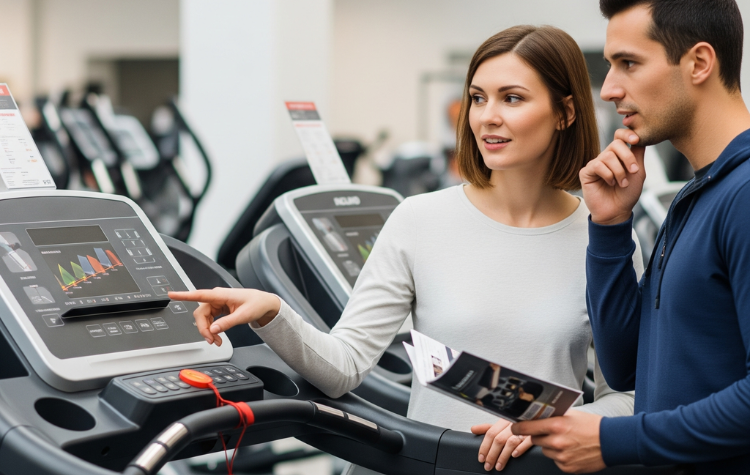
I Want To Buy an Incline Treadmill: What do I Need to Know?
Share
When you decide to buy an incline treadmill, you're making an investment in a piece of equipment that can transform your home workouts. Unlike standard flat treadmills, incline treadmills offer the ability to simulate uphill walking and running, providing enhanced cardiovascular benefits and muscle engagement that can accelerate your fitness goals.
Understanding Incline Treadmill Benefits
The decision to buy an incline treadmill goes beyond simply wanting variety in your workouts. Incline training offers substantial physiological advantages that make these machines worth the investment. When you exercise on an inclined surface, your body works harder to overcome gravity, resulting in increased calorie burn – studies show that even a modest 5% incline can increase calorie expenditure by up to 50% compared to flat surface training.
Incline training also targets different muscle groups more effectively than traditional flat running. Your glutes, hamstrings, and calves receive enhanced activation, while your core muscles work harder to maintain stability. This comprehensive muscle engagement makes incline treadmills particularly valuable for individuals looking to improve their overall strength and endurance simultaneously.
Essential Features to Consider
When you're ready to buy an incline treadmill, several key features distinguish quality machines from basic models. The incline range represents the most critical specification – look for treadmills offering at least 10-15% maximum incline, though premium models may provide up to 40% incline for serious hill training simulation.
Motor power becomes crucial when considering incline functionality. Standard treadmills typically require 2.0-2.5 horsepower continuous duty motors, but incline treadmills benefit from more powerful motors in the 3.0-4.0 horsepower range. This additional power ensures smooth operation even at steep inclines and prevents motor strain during intense uphill workouts.
The incline adjustment mechanism deserves careful attention. Electric incline adjustment offers convenience and precise control, allowing you to modify incline levels during your workout without interruption. Manual incline adjustment, while more affordable, requires stopping your workout to make changes and typically offers fewer incline options.
Motor Requirements and Performance
The motor represents the heart of any incline treadmill, and understanding motor specifications is essential when you buy an incline treadmill. Continuous duty horsepower (CHP) ratings provide the most accurate measure of motor performance under sustained use. For incline treadmills, a minimum of 2.5 CHP is recommended for light to moderate use, while 3.0+ CHP motors handle intensive training and heavier users more effectively.
Consider the motor's cooling system as well. Incline training generates more heat due to increased motor load, making adequate ventilation crucial for longevity. Quality incline treadmills feature enhanced cooling systems with multiple fans and strategic ventilation placement to prevent overheating during extended uphill sessions.
Incline Range Specifications
The incline range directly impacts your workout versatility and training progression. Entry-level incline treadmills typically offer 0-10% incline, suitable for beginners and moderate fitness enthusiasts. Mid-range models extend to 12-15% incline, accommodating more serious training needs and providing options for interval training protocols.
Premium incline treadmills may offer 20-40% maximum incline, simulating extreme hill conditions and providing options for specialized training programs. However, consider your actual training needs – most users find 15% maximum incline sufficient for comprehensive incline training benefits.
Incline increment precision also matters. Quality machines offer 0.5% or 1% incremental adjustments, allowing fine-tuning of workout intensity. Coarser increment machines with 2-3% jumps may limit your ability to progress gradually or maintain specific training zones.

Space and Structural Considerations
Before you buy an incline treadmill, carefully evaluate your available space and structural requirements. Incline treadmills typically require more floor space than standard models due to their extended rear footprint when elevated. Allow for at least 8 feet of length and 4 feet of width, with additional clearance for safety.
Weight capacity becomes particularly important for incline treadmills due to the increased stress placed on the frame during uphill training. Look for machines rated at least 50 pounds above your body weight to ensure structural integrity and smooth operation during intense incline sessions.
Folding capability can address space constraints, but verify that folding mechanisms can handle the additional weight and stress of incline components. Some incline treadmills sacrifice folding capability for structural stability, requiring permanent floor space allocation.
Budget Considerations and Value Assessment
Incline treadmills command premium pricing compared to basic flat models, with quality options ranging from $1,500 to $5,000 or more. When you buy an incline treadmill, consider the total cost of ownership, including delivery, assembly, and potential maintenance requirements.
Entry-level incline treadmills in the $1,500-$2,500 range typically offer basic incline functionality with manual or limited electric adjustment. Mid-range models ($2,500-$4,000) provide enhanced motor power, broader incline ranges, and improved build quality. Premium options ($4,000+) offer commercial-grade components, extensive incline ranges, and advanced programming features.
Warranty coverage becomes crucial given the additional complexity of incline mechanisms. Look for comprehensive warranties covering motor, frame, parts, and labor. Quality manufacturers typically offer 5-10 year motor warranties and 2-3 year parts coverage.
Technology and Programming Features
Modern incline treadmills integrate sophisticated programming that maximizes incline training benefits. Preset hill programs automatically adjust incline levels throughout your workout, simulating real-world terrain changes and preventing adaptation plateaus.
Interactive training capabilities, including virtual courses and live classes, can enhance motivation and provide structured incline workouts. Some advanced models offer automatic incline adjustment based on heart rate targets or predetermined training protocols.
Consider connectivity features that allow integration with fitness tracking apps and devices. This data synchronization helps monitor progress and maintain training consistency across different platforms.
Making Your Final Decision
When you're ready to buy an incline treadmill, prioritize features that align with your specific training goals and usage patterns. Serious runners benefit from higher incline ranges and powerful motors, while casual users may find moderate incline capability sufficient.
Test the machine's incline operation during your evaluation – smooth, quiet adjustment indicates quality components and proper engineering. Pay attention to stability at maximum incline, ensuring the machine remains steady during vigorous workouts.
Consider long-term maintenance requirements and local service availability. Incline mechanisms require periodic calibration and maintenance to ensure accurate operation and prevent premature wear.
The investment in an incline treadmill represents a commitment to enhanced fitness training capabilities. By carefully evaluating motor power, incline specifications, structural requirements, and budget considerations, you can select a machine that provides years of effective, challenging workouts that continuously support your evolving fitness goals.
Frequently Asked Questions
1. What's the minimum incline range I should look for when buying an incline treadmill?
For most users, a minimum incline range of 0-12% provides sufficient versatility for effective incline training. This range allows for gradual progression from flat walking to challenging uphill workouts. Beginners can start with 3-5% inclines, while more advanced users benefit from 10-12% for intensive training. If you're serious about hill training or simulating mountain terrain, consider models offering 15-20% maximum incline.
2. How much more powerful should the motor be compared to a standard treadmill?
Incline treadmills require approximately 0.5-1.0 additional horsepower compared to flat treadmills to handle the increased load of uphill operation. While a 2.0 CHP motor might suffice for flat running, incline treadmills benefit from 2.5-3.0+ CHP motors. This additional power ensures smooth operation at steep inclines and prevents motor strain during extended uphill sessions, ultimately extending the machine's lifespan.
3. Do incline treadmills require more maintenance than regular treadmills?
Yes, incline treadmills typically require slightly more maintenance due to their additional mechanical components. The incline motor, elevation mechanism, and associated electronics need periodic inspection and calibration. However, quality machines with proper lubrication and regular cleaning don't require significantly more maintenance. Budget for annual professional servicing to ensure optimal performance and prevent costly repairs.
4. Can I get an effective workout with just a 10% maximum incline?
Absolutely. A 10% incline provides substantial training benefits and significantly increases workout intensity compared to flat surface training. This incline level effectively targets glutes, hamstrings, and calves while boosting calorie burn. Most fitness goals can be achieved with 10% maximum incline, though serious hill runners or those preparing for mountainous terrain may benefit from higher incline capabilities.
5. What's the price difference between incline and standard treadmills?
Incline treadmills typically cost $500-$1,500 more than comparable standard treadmills, depending on the incline range and motor specifications. Entry-level incline models start around $1,500, while standard treadmills begin around $800-$1,000. The price premium reflects additional motor power, incline mechanisms, and enhanced structural requirements. Consider this investment worthwhile if you plan to utilize incline training regularly, as the enhanced workout benefits justify the additional cost.
